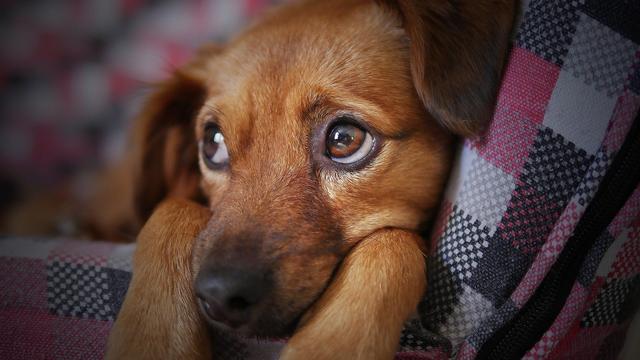This is how the personality of dogs changes when they get older
Dogs are animals that base a large part of their personality on physical activities, for this reason, studies and research based on knowing the personality of dogs usually measure the degree of interaction, attention and intelligence they show.
Puppies marked for the future.
As a puppy we clearly identify which is the puppy's dominant personality, because at this age the dog is outside all influence of training and because its interrelation with the environment is very basic. In the same litter, a specific puppy can be dominant and another submissive, and generally both will maintain this role for the rest of their lives. Being submissive or dominant obviously has nothing to do with the breed or the litter, but rather it is an individual matter that may change depending on the environment in which the dog subsequently lives.
This personality trait will begin to wear off and perhaps be lost due to coexistence with humans and other animals, although they will always maintain a main component that will remember this nuance: submissive or dominant.
When we refer to a submissive puppy we are talking about self-confident puppies that take actions with determination, have the soul of a leader, that is why they are dogs that are more difficult to train and can even cause behavioral problems in the future.
On the other hand, submissives are more docile dogs. Although this condition seems less positive than the opposite, submissive dogs adapt better than dominant ones, are able to live in more chaotic environments and are more easily trained. However, a dominant owner who exercises extreme commands on a submissive dog strict can produce a conflict in the dog and produce blockages and results contrary to those expected. Dominant dogs are precisely the ones that need owners who are also dominant, in the same way submissive dogs get along better with owners who are not very strict.
But there are two other types of dogs: the distracted and the cooperative. Both personalities are opposite, on the one hand, the distracted lose the focus of their actions very easily, they tend to be more focused on the game and on improvising, and training them can be a real headache. The cooperators, on the other hand, are puppies that quickly internalize the existence of humans and develop a bond with people that makes them want to help, follow orders and please the people in their environment.
Read more: Reasons why your dog tries to run away from home
Up to 6 years old they are sponges
A study by Scientific Reports showed that a dog's intelligence improves up to 6 years of age, that is, its attention and ease of problem solving is highly efficient until then, allowing it to learn without limit.

For a dog: acquiring patterns and actively responding to stimuli is equivalent to feeling alive and happy. As advice, if you want your dog to be more and more intelligent, active and happy, do not stop his development and offer him challenges and new experiences, specifically until he is 6 years old, because his personality allows enriching himself with them and every adventure or challenge means a reason to take the day for good.
How to Define Your Personal Values (and a List of 75 Values) https://t.co/DPhZcsyjpg https://t.co/BtRqJeMODC
— The Modest Man Mon Jun 19 02:00:45 +0000 2017
In any case, unlike humans, dogs sleep a lot, they need it physically and also emotionally. Sleep repairs fatigue and fixes experiences, adult dogs are able to sleep between 12 and 14 hours a day, however it is at this age when they sleep the least.
The older, the more the dog resembles the owner
Although it seems like a legend, a Michigan State University study showed that over the years, as the dog matures, it acquires unmistakable traits of its reference human and also, although to a lesser extent, of the environment in which it lives. it lives. According to research, dogs resemble their owners when they reach their mature stage.
This circumstance is directly related to the time we spend with our dog but also to the perception we have of him and how we try to model his behavior. Extroverted owners are conducive to promoting the socialization of the dog and those more introverted people can limit the animal's relationship episodes and isolate it.
In the study, the majority of 'active' humans recognized that their pets were also active and that when they are not there, the animals seem to miss that activity. Conversely, calmer owners defined their pets as less nervous and receptive to spending 'contemplative' time.
This situation occurs in dogs when they reach adulthood, in the middle of their lives. On the one hand, because they have lived with the owner and have spent enough time to adapt and acquire these habits, and on the other hand: the older a dog is, the more difficult it is to train and the deeper its habits become, already configuring acquired personality traits. .
Read more: Reasons that "sad" your dog
Big dogs dying 'young'
We usually consider that a dog is old when it turns 10 years old, however, personality changes based on age are more related to breed, since smaller dogs (Yorkshire, poodle, bichon, chiguagua, for example) live longer and this makes them lose many more faculties as they reach the end of their days, issues that have more to do with physical health than with brain health.
In this sense, it is common for small dogs to end up blind, deaf, without smell or with dental problems, because they are capable of reaching very old ages, even beyond 15 years. However, large dogs, such as German shepherds, golden retrievers or mastiffs generally reach 10 years of age even with sufficient physical faculties intact, their bodies collapse earlier but their interaction with the environment can still be optimal until the end of their days.
In this way, the elderly personality of a golden has nothing to do with that of a Maltese bichon, since goldens still maintain a more or less intense link with reality while bichons, for example, can drag life heavily and distance. Small dogs, in the elderly stage, lose interest in food, lose track of their surroundings, and that makes them look sad or abandoned. However, these definitions are a human mirage, what really happens to them is that their bodies do not transmit fluid communication between them and the world, and they end up isolated after their ailments.
Elderly dogs also reflect their discomfort in the form of irascibility, the less faithful and painful their perception of the world is, the less desire to play and social relationships they will have. That's why dogs over 10 years old can become 'grouchy': they bark to defend their peace of mind or complain when you ask them for more exercise than they can handle. In many cases these slights are responses to their disorientation and not so much a clear attitude of rejection.
Dogs, unlike people, do not have an internal intellectual world in which to compensate for physical problems, so they are not able to rationalize their deteriorating physical situation. A dog that feels clumsy, deep down perceives a barrier to life, and that considerably disrupts his character. Do not take it into account.
Read more: This is why dogs howl
HELLO! The total or partial reproduction of this report and its photographs is prohibited, even citing its origin.








